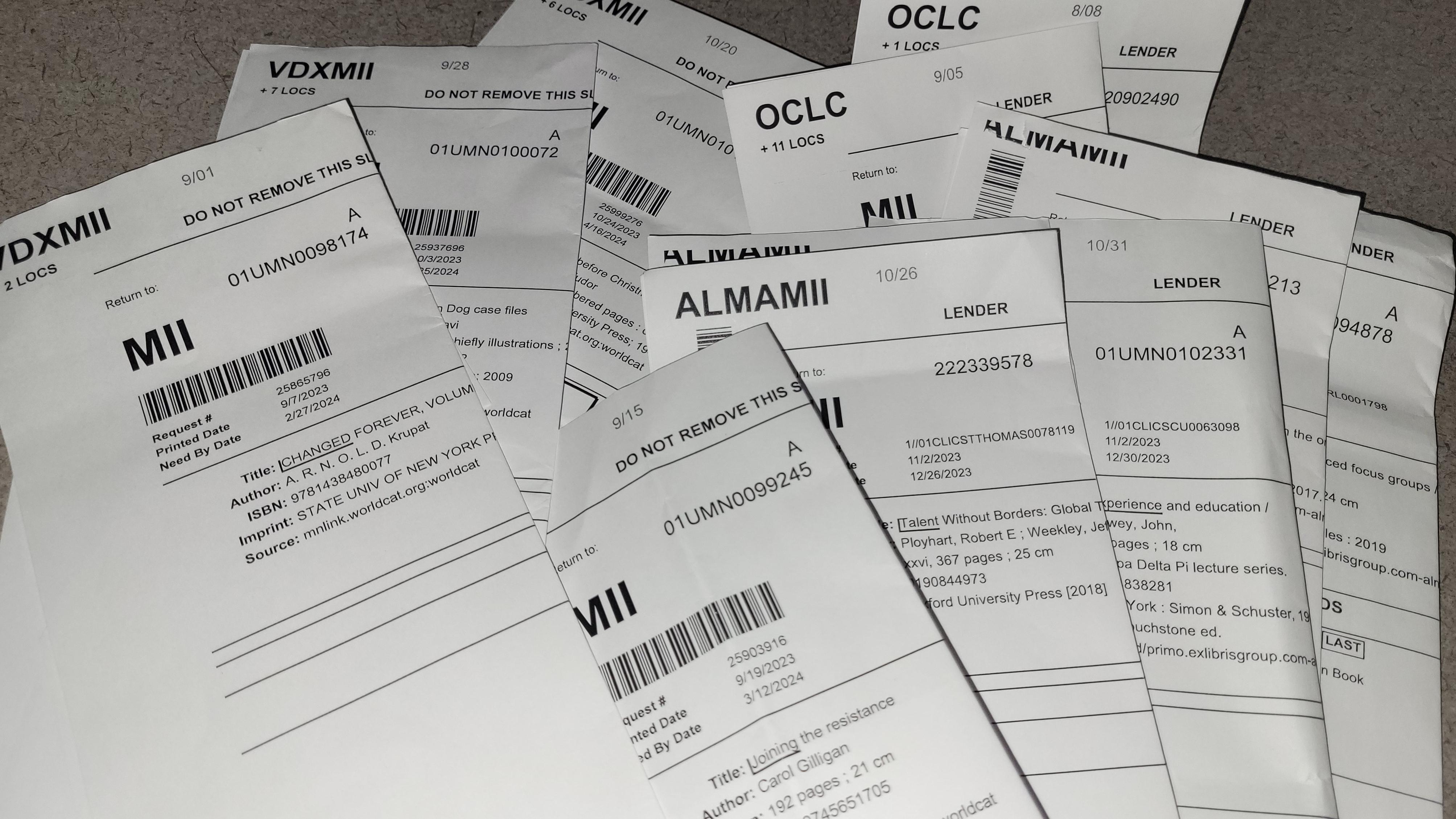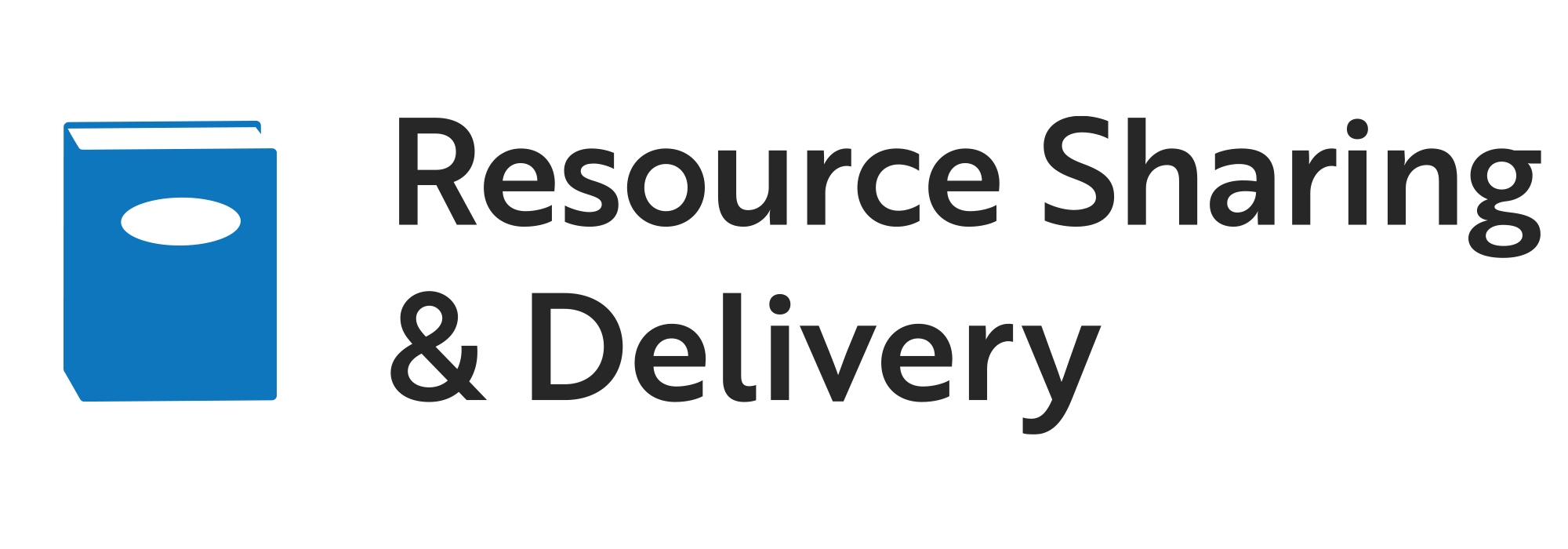by Philip Sites
Quick Summary
Why routing paperwork is so important for interlibrary loan items (and all the other important numbers we need if paperwork goes missing).

As the holiday seasons draws closer, staff from Minitex's Referral Processing Area (RPA) become keenly aware of one thing. No, not yuletide logs. Backlogs!
Yes, the days and weeks after each holiday can be a bit of a catch-up for all the staff in Resource Sharing. At RPA, we often deal with a few days of increased loads of physical materials coming through our area. The one thing that is most helpful, and makes our work more efficient, is if the standard routing paperwork is with the material.
Of course, patrons will lose the paperwork from time to time. What is important, however, is including as much pertinent information as possible when the original routing slip can't be provided. The highest priority, of course, is the long number that is rests above the barcode on every slip, regardless of ILS. In our parlance, it's the "referral" number, but it is also commonly called the ILL number, request or transaction number, or item ID. It's basically the longest string of digits on the paperwork, and links us to the item in our ILL systems. Examples for each system are as follows:
- Alma: Length can vary, but always begins with 01. The last four digits of the number preceded by an * are all we need to look it up (i.e. 01UMN0200345 = *0345)
- VDX: 8-digit number that begins with 26
- Wiscat: 7-digit number that begins with 3
- OCLC: 9-digit number that begins with 2 (The ILL# in Worldshare, not your local TN#).
Items sent without paperwork are often put to the side to receive attention after the majority of the workload clears. Items like these are more prone to processing errors and can potentially be misrouted or misplaced.
RPA staff appreciate the extra attention given to items without paperwork, not only for our workflow, but to maintain efficient service and turnaround time so the items can get to where they belong, whether that's a patron's hands or back on the shelf, ready to be checked out again.

